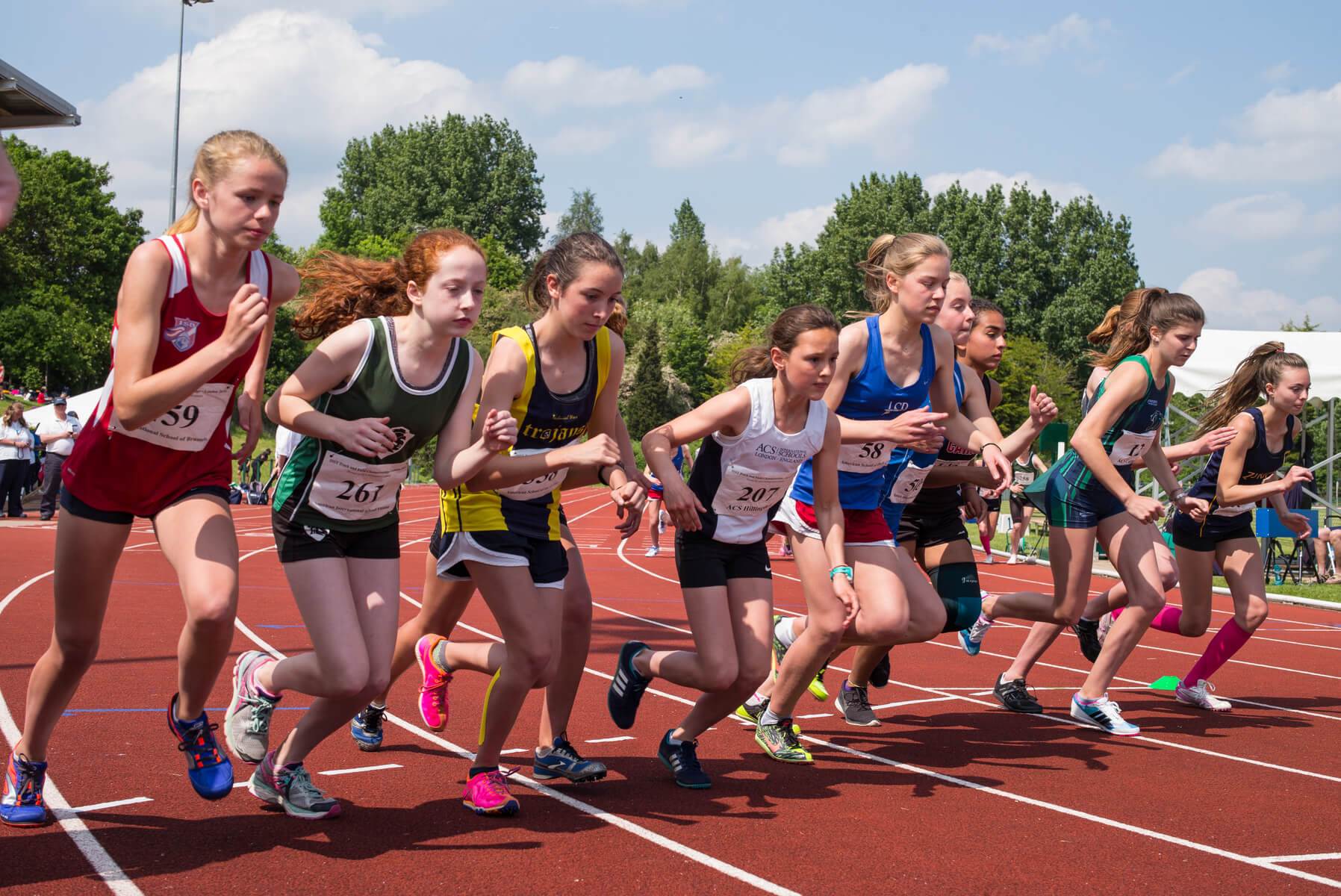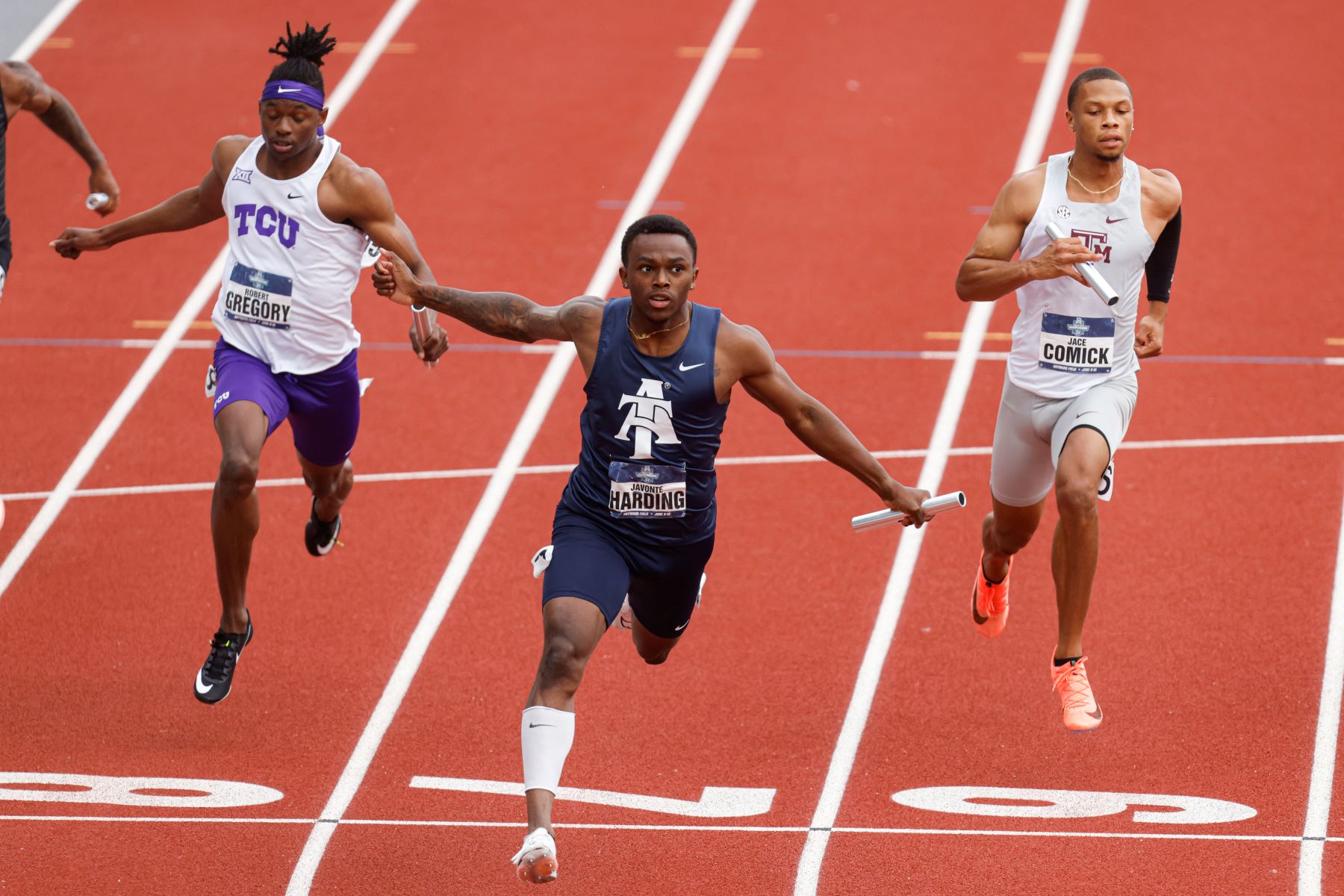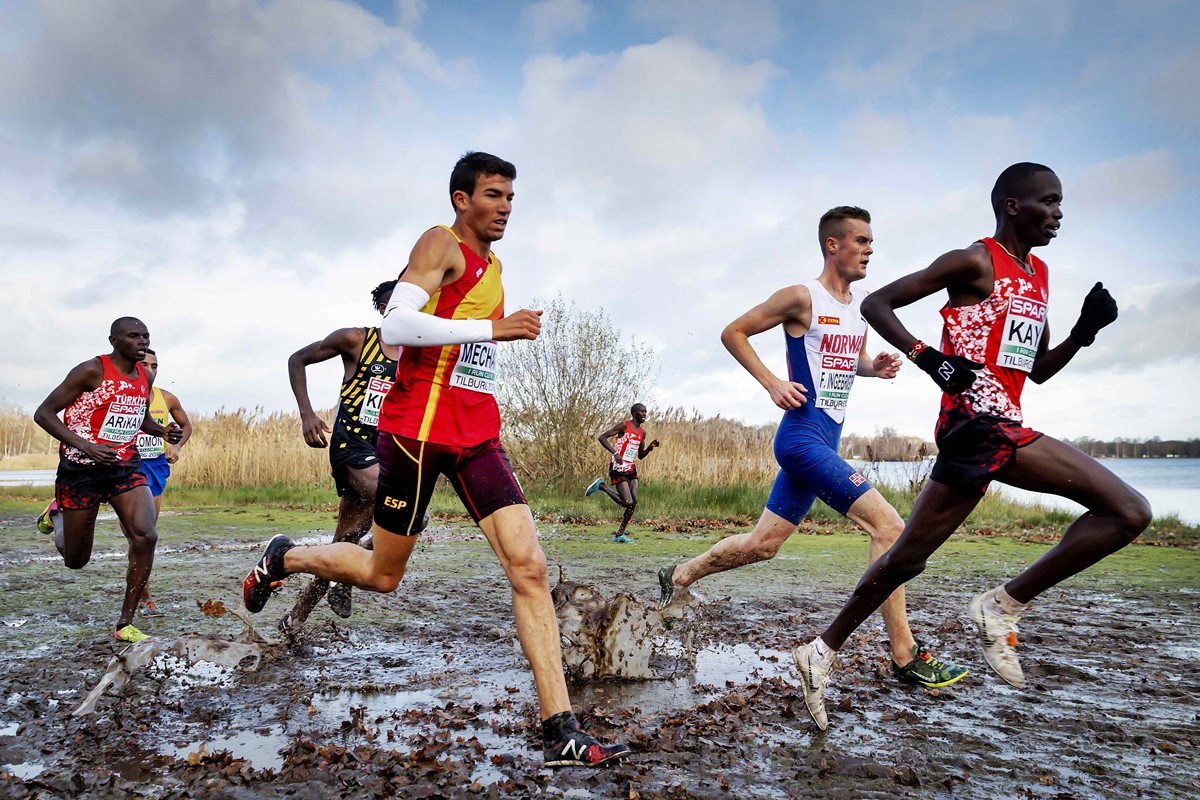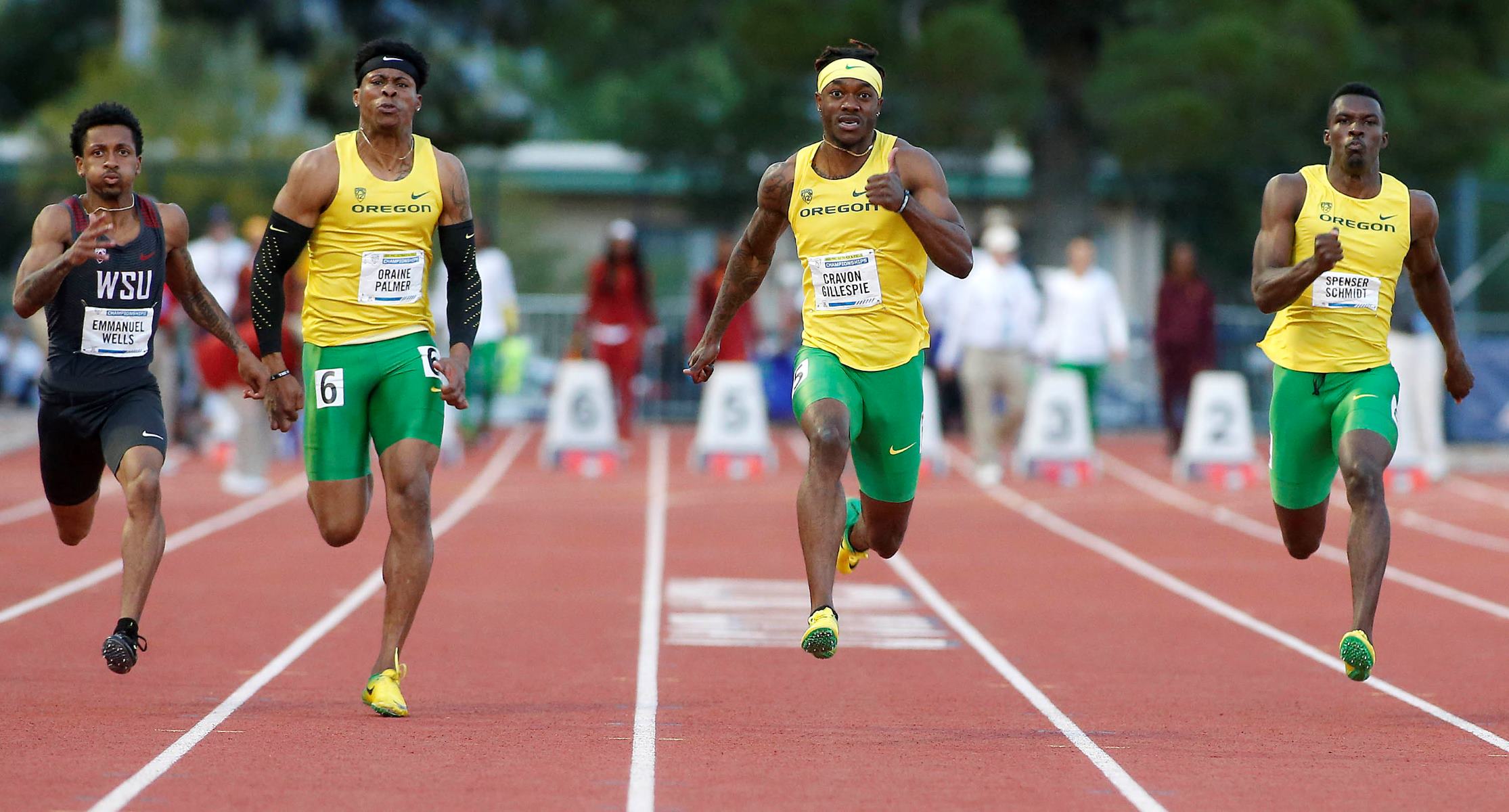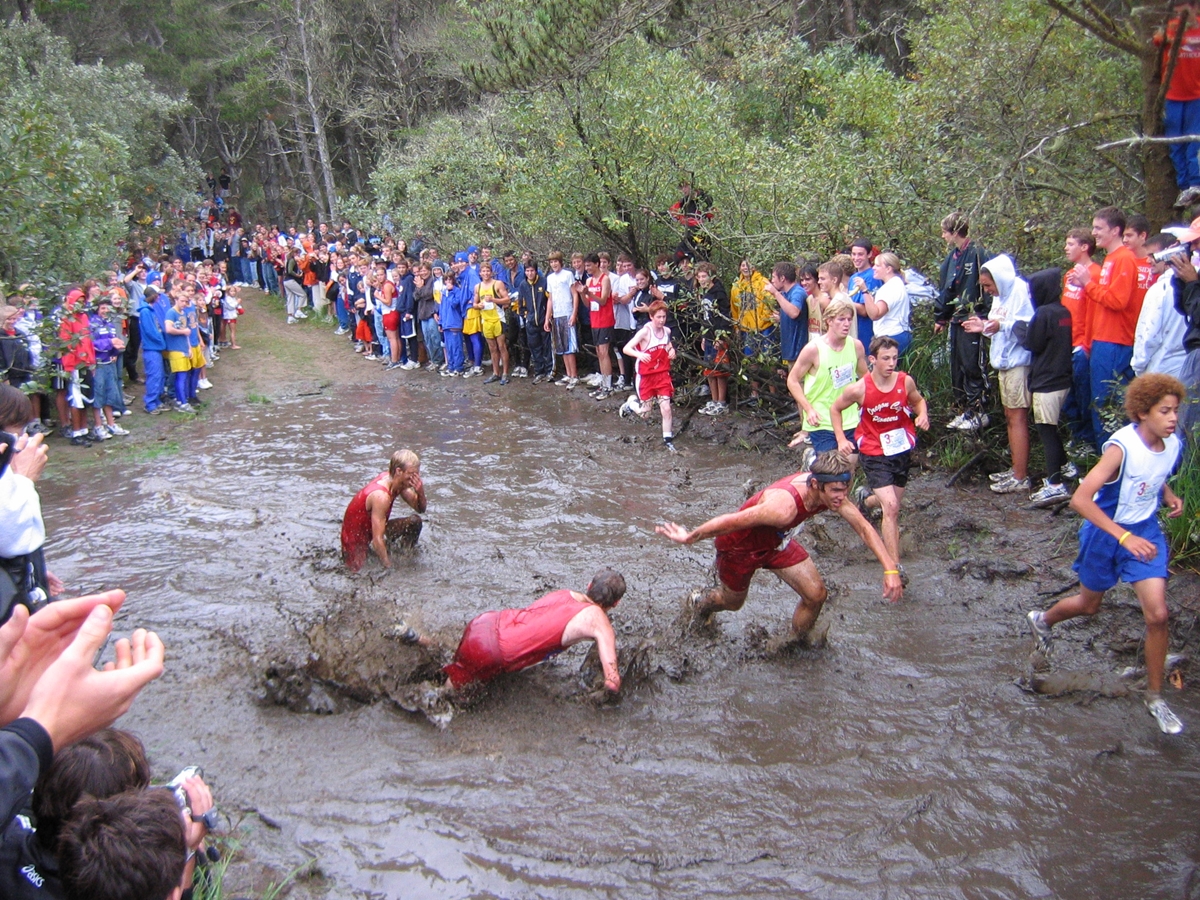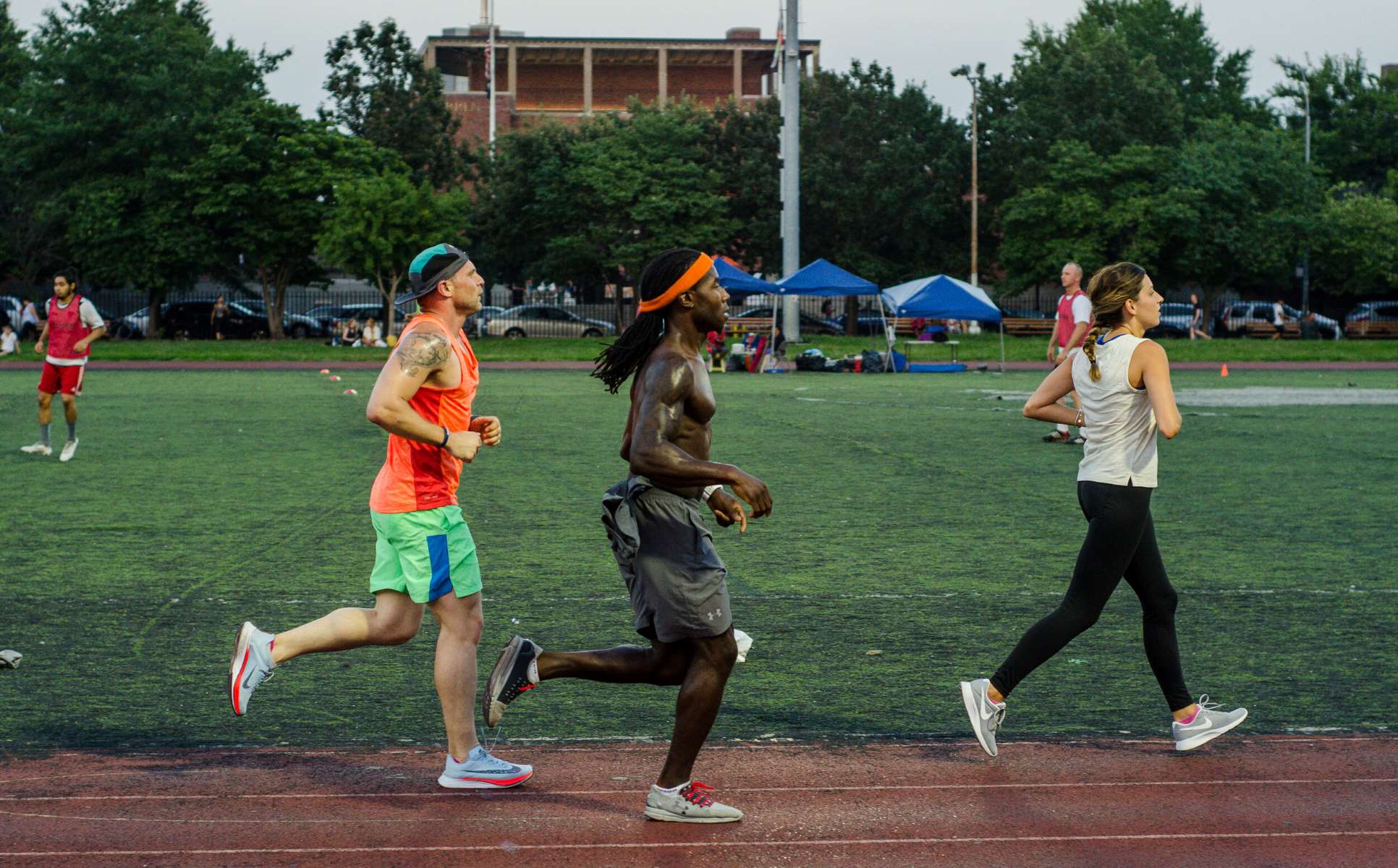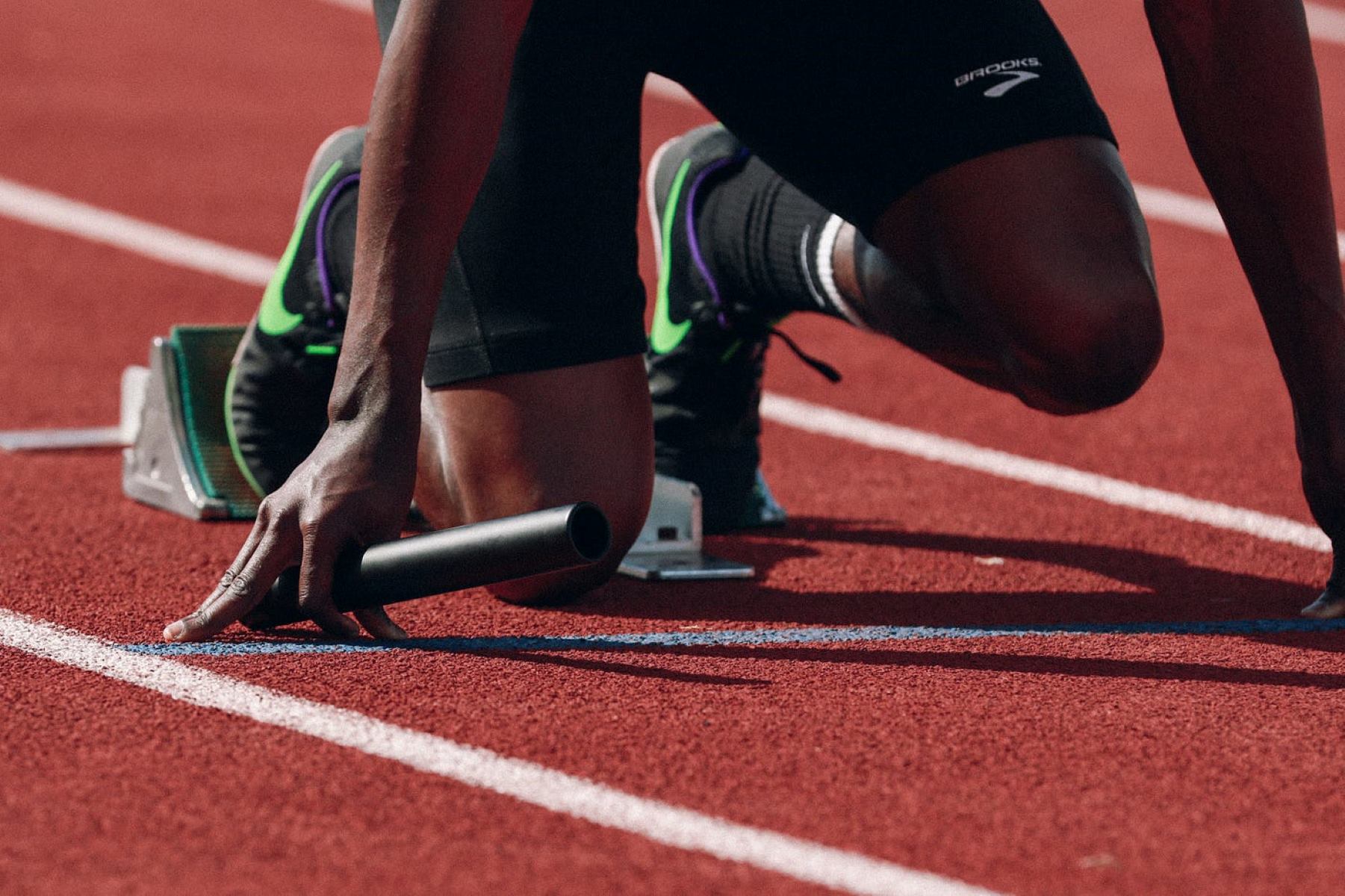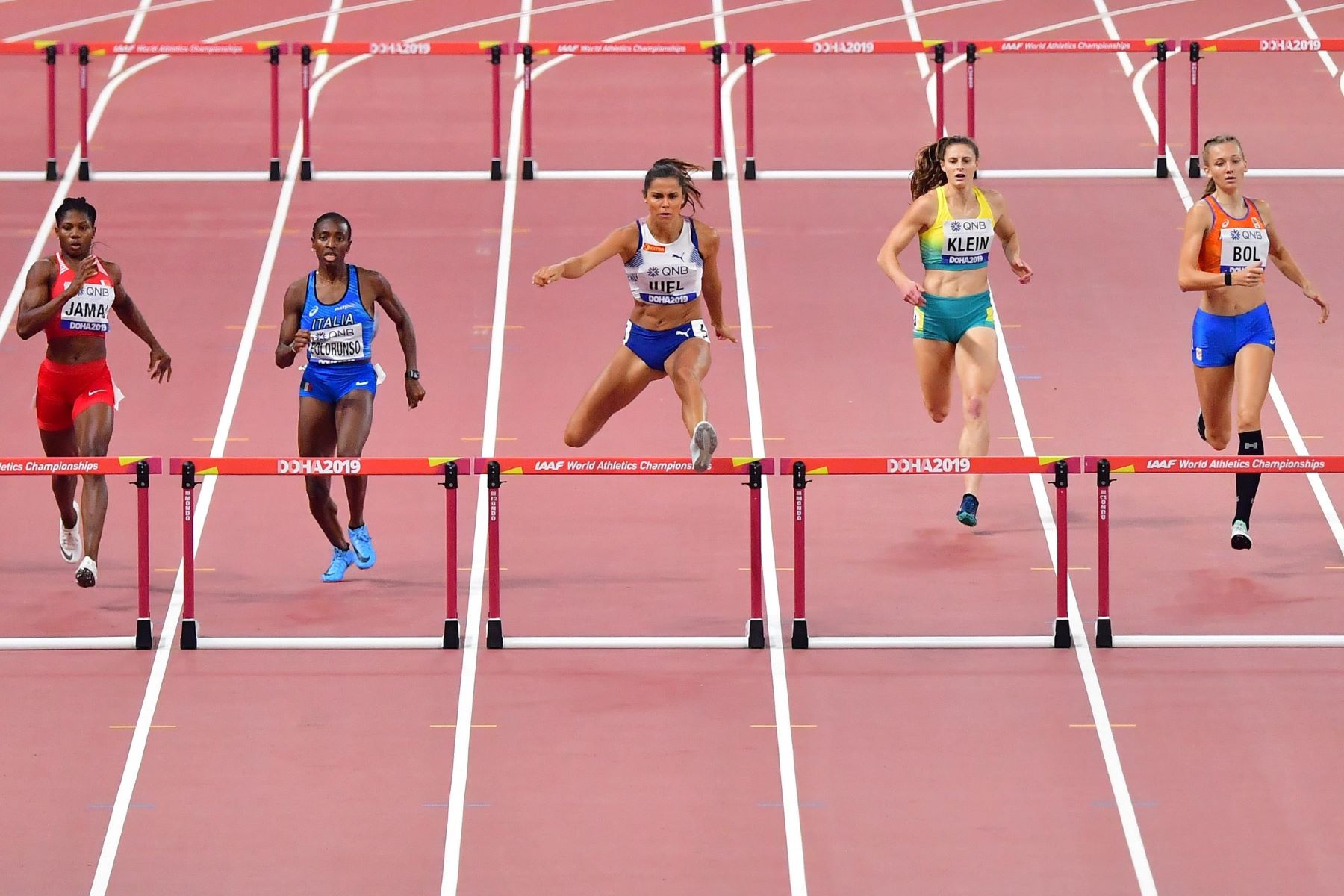Home>Misc>Featured>Track And Field: How To Recover Each Race


Featured
Track And Field: How To Recover Each Race
Modified: January 1, 2024
Learn the best strategies for recovering after each track and field race with our featured guide. Enhance your performance and reach your full potential on the track.
Introduction
Welcome to the exciting world of track and field! Whether you are a seasoned athlete or a beginner, it’s important to understand the crucial role that recovery plays in your performance. Track and field is a sport that demands high levels of physical exertion and places immense stress on your body. Without proper recovery, you risk injury, burnout, and decreased athletic performance.
Recovery is the process by which your body repairs and adapts to the stress placed upon it during training and competition. It is during this time that your muscles replenish glycogen stores, repair damaged tissues, and become stronger. Proper recovery not only enhances your performance but also reduces the risk of overuse injuries and ensures your long-term success in athletics.
In this article, we will explore the importance of recovery in track and field and provide you with a comprehensive guide on different strategies to aid in your recovery process. Whether you are a sprinter, a long-distance runner, a hurdler, or a field event athlete, we have got you covered with tailored recovery tips. So let’s dive in and discover how to maximize your recovery!
Importance of Recovery in Track and Field
Recovery is a vital aspect of any athletic endeavor, and track and field is no exception. The intensity and physical demands of the sport place significant stress on an athlete’s body. Without proper recovery, the risk of injury and burnout greatly increases, hindering both short-term performance and long-term development.
One of the key benefits of recovery is the repair and regeneration of muscle tissues. When you engage in intense training or competition, small micro-tears occur in your muscles. These tears are a normal part of the adaptation process, as your body rebuilds the damaged tissues to become stronger. However, without adequate recovery time, these tears can accumulate, leading to inflammation, pain, and ultimately, overuse injuries such as tendonitis or stress fractures.
Recovery also plays a crucial role in restoring energy stores. Track and field events, whether short sprints or long-distance races, rely heavily on the body’s glycogen stores for fuel. Glycogen is the primary source of energy for high-intensity activities. During recovery, the body replenishes these glycogen stores, ensuring you have sufficient energy for your next training session or competition.
Beyond physical recovery, rest periods also allow your mind to recuperate. Mental fatigue is a real obstacle in sports performance, affecting focus, decision-making, and overall motivation. By incorporating adequate recovery time, you give your mind a chance to recharge, improving your mental clarity and overall well-being.
Furthermore, recovery plays a critical role in preventing burnout and maintaining long-term athletic progress. Overtraining and overexertion can lead to a state of chronic fatigue and decreased performance. It’s important to find a balance between training and rest to avoid physical and mental staleness, and to sustain your passion and enjoyment for the sport over time.
Overall, recovery is the foundation for optimal athletic performance in track and field. It allows your body to repair, regenerate, and adapt to the physical demands of the sport, while also preventing injuries and promoting long-term progress. By prioritizing recovery as an integral part of your training regimen, you set yourself up for success in reaching your athletic goals.
General Guidelines for Recovery
When it comes to recovery in track and field, there are a few general guidelines that apply to athletes across various disciplines and event categories. These guidelines serve as a foundation for optimizing your recovery and ensuring your body is adequately prepared for future training sessions and competitions.
First and foremost, prioritize rest and sleep. Sleep is the ultimate form of recovery, as it allows your body to repair and regenerate. Aim for 7-9 hours of quality sleep each night to support optimal recovery. If possible, try to establish a consistent sleep routine to maximize its benefits.
Hydration is another key aspect of recovery. Proper hydration is essential for muscle function, nutrient delivery, and toxin removal. Drink plenty of water throughout the day, and ensure you replenish fluids lost during training sessions or competitions. Don’t wait until you feel thirsty to drink, as thirst is a sign that you are already dehydrated.
Nutrition plays a vital role in recovery as well. Consume a well-rounded diet that includes a good balance of carbohydrates, protein, and healthy fats. Carbohydrates replenish glycogen stores, protein aids in muscle repair, and fats support hormonal balance and overall health. Consider working with a nutritionist to optimize your dietary choices and ensure you are meeting your individual needs.
Incorporate active recovery methods into your routine. Active recovery refers to low-intensity activities that promote blood flow and aid in muscle recovery without causing further stress. Examples include light jogging, swimming, or cycling. Engaging in these activities on rest days can help reduce muscle soreness and promote overall healing.
Don’t neglect stretching and mobility exercises. Stretching helps improve flexibility and range of motion, while mobility exercises target specific muscle groups and joints, helping to prevent imbalances and reduce the risk of injury. Incorporate dynamic stretches and foam rolling into your warm-up and cool-down routine to keep your muscles supple and ready for action.
Lastly, listen to your body. Pay attention to warning signs of overtraining or excessive fatigue, such as persistent soreness, decreased performance, or changes in mood. If you feel excessively tired or find it difficult to complete your workouts, it may be a sign that you need more rest or a lighter training load. Be mindful of your body’s signals and adjust your training schedule accordingly.
By following these general guidelines for recovery, you are setting yourself up for success in track and field. Remember, recovery is just as important as training itself, and by giving your body the time and resources it needs to heal and recharge, you will enhance your performance and protect your long-term athletic development.
Recovery Strategies for Short Sprints (100m and 200m)
Short sprints, such as the 100m and 200m, require explosive power and speed. To optimize your recovery after these intense races, follow these strategies:
- Cool Down: After your race, perform a cooldown routine consisting of light jogging, dynamic stretches, and cool-down exercises specific to sprinting. This helps your body transition from high-intensity activity to a relaxed state and aids in removing waste products from your muscles.
- Ice Bath: Taking an ice bath can help reduce muscle inflammation and soreness. Fill a tub with cold water and ice and immerse your lower body for 10-15 minutes. If an ice bath is not available, you can also use ice packs or contrast showers (alternating hot and cold water) to promote blood flow and reduce inflammation.
- Nutrition: Consume a post-race meal or snack that includes a combination of carbohydrates and protein within 30-60 minutes after your race. This aids in replenishing glycogen stores and promoting muscle repair. Opt for lean sources of protein, such as chicken, fish, or tofu, and include complex carbohydrates like whole grains, fruits, and vegetables.
- Stretching and Foam Rolling: Engage in static stretching exercises to improve flexibility and release tension in your muscles. Target the major muscle groups used in sprinting, such as the hamstrings, quadriceps, calves, and hip flexors. Additionally, use a foam roller to self-massage and release any tightness or knots in your muscles.
- Rest and Sleep: Allow yourself ample rest and recovery time between training sessions. Rest days are crucial for your muscles to repair and adapt. Aim for 7-9 hours of quality sleep each night to support optimal recovery and hormone regulation.
- Active Recovery: Engage in low-impact activities on rest days, such as swimming, cycling, or walking, to promote blood flow and aid in recovery. These activities help flush out waste products and stimulate muscle repair without placing excessive stress on your body.
By implementing these recovery strategies, you can ensure that you give your body the time and resources it needs to recover fully and perform at your best in short sprint events.
Recovery Strategies for Middle-Distance Races (400m and 800m)
Middle-distance races, such as the 400m and 800m, require a combination of speed, endurance, and tactical execution. After pushing your body to the limits in these events, effective recovery strategies are crucial for optimal performance. Here are some strategies to aid in your recovery:
- Cool Down: After your race, engage in a cooldown routine consisting of light jogging and dynamic stretches. This helps your body gradually transition from high-intensity activity to a relaxed state and promotes blood flow, aiding in the removal of waste products.
- Hydration and Nutrition: Replenish lost fluids and nutrients by hydrating properly after the race. Drink water or a sports drink to replace electrolytes. Consume a post-race meal or snack that contains a balance of carbohydrates and protein to replenish glycogen stores and support muscle recovery.
- Compression Garments: Consider wearing compression garments, such as compression socks or tights, after your race. These garments can improve circulation, reduce muscle soreness, and promote a faster recovery by helping to remove metabolic waste products.
- Active Recovery: Incorporate low-impact activities, such as cycling or swimming, on recovery days to promote blood flow and aid in muscle recovery. Engaging in gentle exercise stimulates the delivery of oxygen and nutrients to your muscles, facilitating the repair process.
- Massage and Self-Myofascial Release (SMR): Consider booking a sports massage or using foam rollers, massage balls, or massage sticks for self-myofascial release. These techniques help release muscle tension and promote circulation, aiding in muscle recovery and reducing the risk of injury.
- Rest and Sleep: Allow yourself adequate rest and recovery time between training sessions. Listen to your body and take rest days when needed. Aim for 7-9 hours of quality sleep each night to support optimal recovery and hormone regulation.
Implementing these recovery strategies will help your body replenish energy stores, reduce muscle soreness, and enhance overall recovery after middle-distance races. By prioritizing recovery, you can ensure that you are well-prepared for your next training session or competition.
Recovery Strategies for Long-Distance Races (1500m and Above)
Long-distance races, such as the 1500m and above, require a combination of endurance, pacing, and mental fortitude. After pushing your body to its limits in these grueling events, proper recovery strategies are essential to aid in your overall performance. Here are some strategies to assist in your recovery:
- Cool Down: After crossing the finish line, engage in a cooldown routine that includes easy jogging and dynamic stretching. This will help lower your heart rate gradually and allow your body to transition from intense activity to a relaxed state.
- Hydration and Nutrition: Rehydrate your body by drinking water, electrolyte-rich sports drinks, and consuming foods that are high in carbohydrates and lean protein. Proper nutrition replenishes glycogen stores and aids in muscle recovery.
- Active Recovery: Engage in low-impact activities, such as walking, swimming, or cycling, on rest days to promote blood flow and aid in muscle recovery. These activities help flush out metabolic waste products and stimulate the healing process.
- Stretching and Mobility: Perform static stretches to improve flexibility and release tension in major muscle groups. Incorporate mobility exercises to target areas that become tight during long-distance running, such as the hips, hamstrings, and calves. This helps prevent imbalances and reduce the risk of injury.
- Ice Bath or Cold Therapy: Consider taking an ice bath or using cold therapy techniques to reduce inflammation and muscle soreness. Immersing your legs in cold water or using ice packs on the affected areas can help speed up the recovery process.
- Rest and Sleep: Allow yourself sufficient rest and recovery time between intense training sessions. Take at least one or two complete rest days each week to allow your body to repair and rebuild. Aim for 7-9 hours of quality sleep each night to support overall recovery and rejuvenation.
- Massage and Self-Care: Treat yourself to a sports massage or use self-massage tools like foam rollers or massage balls to alleviate muscle tension and promote blood flow. Additionally, prioritize self-care activities like relaxing baths or gentle stretching to ease muscle soreness.
By incorporating these recovery strategies into your training regimen, you give your body the opportunity to repair, restore, and adapt after long-distance races. Prioritizing recovery will not only minimize the risk of injury but also optimize your performance for future training and competitions.
Recovery Strategies for Hurdles and Steeplechase
Hurdles and steeplechase events combine speed, agility, and endurance. These races place unique demands on the body due to the complex movements and potential obstacles involved. Implementing the following recovery strategies can aid in your overall performance and minimize the risk of injury:
- Cool Down: After your race, perform a thorough cooldown routine that includes gentle jogging, dynamic stretches, and exercises specific to hurdling or steeplechase. This helps lower your heart rate and gradually return your body to a relaxed state.
- Hydration and Nutrition: Rehydrate your body by drinking plenty of water and consuming electrolyte-rich fluids to replace what was lost during the race. Also, prioritize post-race nutrition by consuming a balanced meal or snack that contains carbohydrates and protein to replenish energy stores and aid in muscle recovery.
- Compression Gear: Consider wearing compression clothing, such as compression socks or leg sleeves, after your race. Compression gear can help improve blood circulation, reduce muscle soreness, and minimize inflammation in the lower limbs.
- Stretching and Foam Rolling: Perform static stretches to improve flexibility and alleviate muscle tension. Prioritize stretching the muscles used during hurdling or steeplechase, such as the hip flexors, hamstrings, calves, and lower back. Additionally, use a foam roller to release any tightness or knots in your muscles.
- Active Recovery: Engage in low-impact activities on rest days to promote blood flow and aid in muscle recovery. Activities such as swimming or cycling can help flush out waste products and reduce muscle soreness without placing excessive stress on your body.
- Rest and Sleep: Allow yourself ample rest and recovery time between training sessions. Balancing training with rest is crucial for optimal performance and injury prevention. Additionally, prioritize quality sleep to support overall recovery and hormonal balance.
- Mental Relaxation Techniques: Practice mental relaxation techniques, such as deep breathing, mindfulness, or meditation, to reduce stress and promote mental recovery. Hurdles and steeplechase events require intense focus, so giving your mind time to rest and recenter is essential for long-term success.
By incorporating these recovery strategies into your training routine, you can support your body’s healing and adaptation process after hurdling or steeplechase events. Prioritizing recovery will help you maintain optimal performance, minimize the risk of injuries, and ensure long-term success in these challenging track and field disciplines.
Recovery Strategies for Relay Races
Relay races require a combination of speed, coordination, and teamwork. Each runner in the relay team puts forth maximum effort, passing the baton to the next teammate. After completing your leg of the relay, it is crucial to focus on recovery to ensure optimal performance for the rest of the race. Here are some recovery strategies to consider:
- Cool Down: After handing off the baton, perform a cooldown routine that includes a gentle jog and dynamic stretches. This helps your body transition from high-intensity running to a more relaxed state and aids in the removal of waste products.
- Hydration and Nutrition: Rehydrate your body by drinking water or electrolyte-rich beverages after your relay leg. Consume a balanced meal or snack that includes carbohydrates and protein to refuel your muscles and support recovery.
- Compression Gear: Consider wearing compression garments, such as compression socks or calf sleeves, after your relay leg. Compression gear can enhance blood flow, reduce muscle soreness, and aid in recovery for the next race.
- Rest and Active Recovery: Allow yourself time to rest between relay legs. If possible, sit or lie down with your legs elevated to promote circulation and reduce fatigue. During your team’s off-time, engage in light walking or gentle stretching to maintain blood flow and prevent muscles from tightening up.
- Stretching and Mobility: Perform dynamic stretches and mobility exercises specific to the muscles used during your relay leg. Focus on areas such as the hamstrings, quadriceps, calves, and hip flexors to keep these muscles supple and ready for the next effort.
- Mental Relaxation: Use mental relaxation techniques, such as deep breathing or visualization, to reduce stress and refocus your mind. Relay races can be mentally demanding, so taking a few moments to relax and reset can help improve your subsequent performance.
- Communication and Support: Encourage open communication and support within your relay team. Providing positive feedback, lending a listening ear, and cheering for your teammates can contribute to a positive and uplifting environment, fostering team morale and motivation.
By incorporating these recovery strategies into your relay race routine, you can optimize your performance and support your team’s success. Prioritizing proper recovery allows each runner to perform at their best, ensuring smooth transitions and maximizing the team’s overall speed and efficiency.
Recovery Strategies for Field Events (Throwing and Jumping)
Field events in track and field, such as throwing and jumping, require explosive power, technique, and precision. These events place significant stress on the body, particularly the muscles and joints involved in executing these movements. Proper recovery strategies are essential to support optimal performance and minimize the risk of injuries. Here are some strategies to aid in your recovery for throwing and jumping events:
- Cool Down: After each attempt, perform a cooldown routine that includes light jogging, dynamic stretches, and exercises that target the muscles used in your specific event. This helps bring your body back to a relaxed state and aids in the removal of metabolic waste products.
- Hydration and Nutrition: Replenish lost fluids by drinking water or electrolyte-rich beverages. Consume a balanced meal or snack that includes carbohydrates, protein, and healthy fats to support muscle recovery and replenish energy stores.
- Rest and Recovery: Allow yourself adequate rest between attempts or training sessions. This allows your muscles and connective tissues to recover and adapt. Pay attention to your body’s signals and avoid overtraining, which can lead to decreased performance and increased injury risk.
- Stretching and Mobility: Perform static stretches to improve flexibility and target the specific muscles used in your events. Additionally, focus on mobility exercises that enhance joint range of motion and prevent imbalances. Pay particular attention to areas such as the shoulders, hips, back, and legs.
- Ice and Heat Therapy: Apply ice packs or cold compresses to reduce inflammation and soreness, particularly after intense training or competition. Contrast therapy, alternating between ice and heat, can also promote blood circulation and facilitate recovery.
- Massage and Self-Myofascial Release (SMR): Consider incorporating sports massage or using foam rollers, massage balls, or massage sticks to release muscle tension and improve blood flow. These techniques can help reduce muscle soreness, improve flexibility, and aid in recovery.
- Cross-Training: Engage in low-impact cross-training activities on rest days to maintain cardiovascular fitness and promote overall recovery. Activities such as swimming, cycling, or yoga can relieve stress on the joints and provide a refreshing change of pace.
By incorporating these recovery strategies into your training and competition routine for throwing and jumping events, you can support your body’s healing and adaptation process. Prioritizing recovery aids in reducing the risk of injuries, optimizing performance, and ensuring long-term success in these demanding field events.
Conclusion
Recovery is a critical component of every track and field athlete’s training regimen. Regardless of the event or discipline, proper recovery strategies are essential for optimal performance, injury prevention, and long-term success. By implementing the appropriate recovery techniques, you can ensure that your body is adequately prepared for the demands of training and competition.
Whether you are a sprinter, middle-distance runner, long-distance athlete, hurdler, or field event competitor, there are specific strategies tailored to your event category. Cooling down, hydrating, and replenishing nutrition are fundamental aspects of recovery that apply to all athletes. Additionally, practices such as stretching, compression therapy, and various forms of active recovery can help reduce muscle soreness and improve overall healing.
Rest and sleep are crucial elements in the recovery process. Allowing your body sufficient time to recover and repair is vital for muscle growth, glycogen replenishment, and mental rejuvenation. Furthermore, incorporating self-care practices like massage and mental relaxation techniques can promote overall well-being and contribute to faster recovery.
Remember, recovery should not be an afterthought but an integral part of your training plan. By prioritizing and implementing appropriate recovery strategies, you can optimize your performance, prevent injuries, and achieve long-term progress in track and field.
So, as you embark on your track and field journey, keep in mind the importance of recovery. Listen to your body, be mindful of its needs, and make recovery an essential part of your routine. With adequate rest, proper nutrition, and targeted recovery strategies, you will unleash your full potential and excel in your chosen event. Take care of your body and reap the rewards of a balanced and holistic approach to training and recovery.

